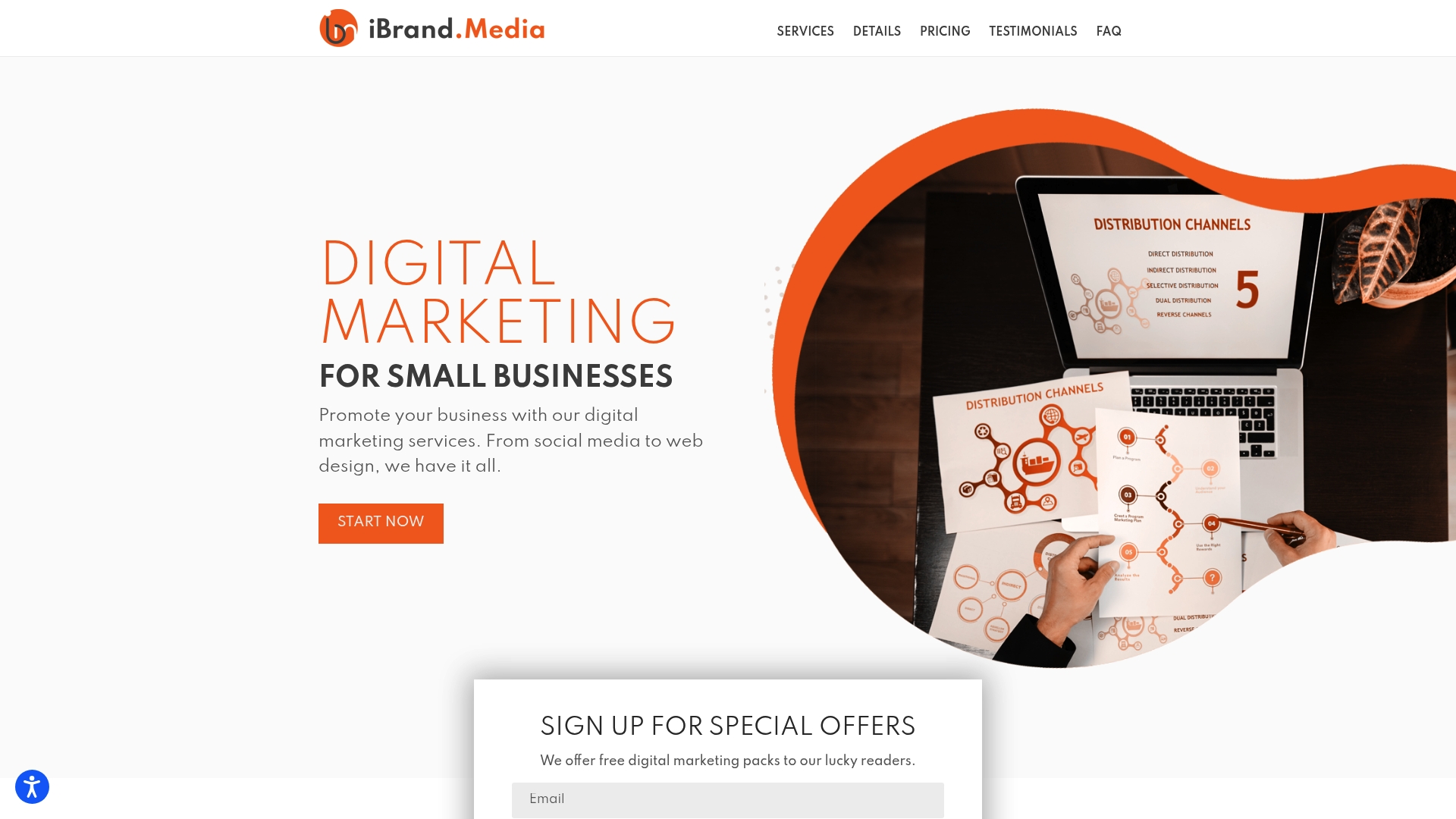Did you know that users form an opinion about a website in less than 50 milliseconds? This instant judgment decides whether visitors stay, engage, or quickly click away. Clear navigation, quality content, and reliable performance shape these split-second decisions, while trust and accessibility keep people coming back. When even a small design flaw can turn visitors away, understanding the main factors behind user experience sets the stage for online success.
Table of Contents
- Defining Website User Experience Factors
- Core Elements Impacting Usability and Satisfaction
- Mobile, Accessibility, and Performance Essentials
- How Visual Design Influences User Behavior
- Avoiding Common User Experience Pitfalls
Key Takeaways
| Point | Details |
|---|---|
| Holistic User Experience | User experience is defined by navigation, content, performance, and trust, which collectively influence overall user satisfaction. |
| Responsive and Accessible Design | Websites must be mobile-friendly and accessible to ensure a seamless experience for all users, including those with disabilities. |
| Performance Matters | Fast load times and optimized visual elements are crucial, as delays can lead to higher bounce rates and lower user engagement. |
| Avoid Complex Navigation | Simplifying navigation and focusing on user needs can prevent frustration and enhance overall usability, leading to increased user retention. |
Defining Website User Experience Factors
Website user experience encompasses the holistic interaction between users and a website, focusing on how effectively and pleasantly visitors can navigate, consume content, and achieve their objectives. According to the Webreep model, user experience is fundamentally composed of four critical dimensions that collectively determine overall satisfaction: navigation, content, performance, and trust.
Here’s a summary of the four critical website user experience factors:
| Factor | Key Attributes | Role in User Experience |
|---|---|---|
| Navigation | Intuitive menus Clear pathways Search capabilities |
Enables easy movement through site |
| Content | Relevant Accurate Well-presented |
Satisfies user information needs |
| Performance | Fast load speed Visual appeal |
Enhances perception and engagement |
| Trust | Security Transparency Reliability |
Builds user confidence and loyalty |
Navigation refers to how easily users can move through a website, with key aspects including intuitive menu structures, clear pathways, and efficient search capabilities. Content quality becomes paramount, where information must be relevant, accurate, and presented in a manner that meets user expectations. Understanding the Benefits of Web Design highlights how strategic design can significantly enhance these foundational user experience elements.
Performance metrics like page load speed and visual appeal dramatically influence user perception. Research demonstrates the aesthetic-usability effect, where visually pleasing designs are subconsciously perceived as more user-friendly and intuitive. This psychological phenomenon underscores that user experience transcends mere functionality—it’s about creating an engaging, seamless digital environment that feels both professional and welcoming.
Ultimately, building trust represents the pinnacle of user experience. Users must feel secure, understand website intentions, and believe their time and potential interactions will be respected. By meticulously crafting each dimension—navigation, content, performance, and trust—businesses can create digital experiences that not only meet but exceed user expectations.
Core Elements Impacting Usability and Satisfaction
Website usability and user satisfaction are driven by strategic design elements that create seamless, intuitive digital experiences. According to research, key usability factors are critical in determining how users interact with and perceive a website. The most fundamental components include intuitive navigation, clear call-to-action buttons, logical site structure, and rapid page load speeds.
Navigation plays a pivotal role in user engagement. Understanding User Experience in Web Design emphasizes that users should be able to find information within minimal clicks, creating a frictionless browsing experience. Effective design prioritizes organized content and clear pathways, ensuring visitors can effortlessly locate the information they seek without feeling overwhelmed or frustrated.
Responsive design emerges as another crucial element impacting user satisfaction. Modern users expect websites to function flawlessly across multiple devices, from desktop computers to smartphones. This means consistent performance, readable text, and adaptable layouts that maintain visual appeal and functionality regardless of screen size. The goal is creating a uniform experience that feels intentional and professional.
Ultimately, successful usability hinges on understanding user psychology and anticipating their needs. By focusing on streamlined navigation, fast performance, clear information architecture, and responsive design, websites can transform casual visitors into engaged, satisfied users who are more likely to return and recommend the platform to others.
Mobile, Accessibility, and Performance Essentials
Modern website design demands a holistic approach that prioritizes mobile responsiveness, accessibility, and performance optimization. With increasing mobile internet usage, websites must deliver seamless experiences across diverse devices and user capabilities. Understanding Mobile-Friendly Websites highlights the critical importance of adaptive design that ensures content remains readable and functional regardless of screen size.
Accessibility represents a fundamental aspect of inclusive web design. This means creating digital experiences that accommodate users with various abilities, including those using screen readers, alternative navigation methods, or experiencing visual, auditory, or motor impairments. Key accessibility strategies involve using readable fonts, providing alternative text for images, ensuring keyboard navigation, and maintaining sufficient color contrast.
Performance optimization directly impacts user satisfaction and engagement. Research indicates that slow-loading pages dramatically increase bounce rates, with users typically abandoning sites that take more than a few seconds to load. Critical performance factors include minimizing large image files, leveraging browser caching, reducing server response times, and implementing efficient coding practices that streamline website functionality.
Ultimately, successful websites integrate mobile responsiveness, accessibility, and performance as interconnected priorities. By focusing on creating fast, adaptable, and inclusive digital experiences, businesses can ensure their online presence remains welcoming and effective for the broadest possible audience.
How Visual Design Influences User Behavior
Visual design plays a pivotal role in shaping user perception, engagement, and behavior on websites. Color psychology and aesthetic elements create powerful subconscious responses that guide user interactions and decision-making processes. Understanding Website Design Basics reveals how strategic visual choices can significantly impact user experience and emotional connection.
Research demonstrates that website aesthetics extend far beyond mere visual appeal. According to recent studies, increasing visual intensity can enhance user conversion rates, but only up to a specific threshold. Beyond this point, users begin to experience visual fatigue, leading to decreased engagement and potentially negative responses. This delicate balance requires thoughtful design that harmonizes color schemes, typography, and visual hierarchy.
Key visual design elements that influence user behavior include color harmony, font selection, whitespace management, and visual hierarchy. Colors evoke specific emotional responses—blue can communicate trust, while red might signal urgency or excitement. Typography affects readability and perceived professionalism, with font choices subtly communicating brand personality and credibility.
Ultimately, successful visual design is an intricate dance between aesthetic appeal and functional clarity. By understanding how visual elements psychologically interact with users, businesses can create websites that not only look beautiful but also guide users intuitively toward desired actions and experiences.
Avoiding Common User Experience Pitfalls
User experience design is fraught with potential missteps that can dramatically undermine a website’s effectiveness. Navigation complexity stands out as a primary culprit, where developers frequently create intricate systems that confuse rather than guide users. 7 Common Digital Marketing Mistakes highlights how even well-intentioned design choices can inadvertently create barriers to user engagement.
Research demonstrates that many websites prioritize developer perspectives over genuine user needs, leading to significant usability challenges. Common pitfalls include convoluted menu structures, excessive clicks required to access information, inconsistent design patterns, and non-intuitive information architectures. These design mistakes can frustrate users, increasing bounce rates and reducing overall site satisfaction.
Performance-related issues represent another critical area of user experience failure. Slow page load times, unresponsive design elements, and poor mobile compatibility can instantly diminish user trust and engagement. Modern users expect instantaneous, seamless interactions—any friction in the experience can prompt immediate abandonment. Critical areas to address include optimizing image sizes, implementing efficient caching strategies, and ensuring responsive design across all device types.
Successful user experience requires a relentless commitment to simplicity, clarity, and user-centered design. By systematically identifying and eliminating potential friction points, businesses can create digital experiences that feel intuitive, responsive, and genuinely user-friendly.
The goal is not perfection, but continuous improvement based on actual user feedback and behavior.
Ready to Transform Your Website User Experience?
Struggling with confusing navigation, slow performance, or lack of user trust? You are not alone. Many small business owners face these same problems, as outlined in our complete guide to website user experience factors. Issues like unclear pathways and frustrating load times do more than annoy your visitors. They can drive them away before they ever see what you offer. Your customers expect seamless journeys, easy-to-find information, and instant loading on every device. If any of these pain points sound familiar, it is time to act.
See how we help local businesses design winning websites

Bring your digital presence to life with custom solutions designed for real results. ibrand.media turns websites into powerful tools for growth with services that cover everything from user-friendly web design and SEO optimization to local promotion and performance tracking. Do not let a poor experience hold your business back. Start your journey to better engagement and increased sales by contacting our team now. Success starts with one step—make yours today.
Frequently Asked Questions
What are the key factors that influence website user experience?
The four critical factors that influence website user experience are navigation, content, performance, and trust. These elements collectively determine how easily users can interact with a website and achieve their goals.
How can I improve website navigation for better user experience?
Improving website navigation involves creating intuitive menu structures, ensuring clear pathways for users to follow, and integrating efficient search capabilities to help visitors quickly find the information they seek.
Why is website performance important for user satisfaction?
Website performance is crucial because slow-loading pages can lead to high bounce rates and diminish user trust. Fast load speeds, visual appeal, and overall responsiveness enhance user engagement and satisfaction.
What role does visual design play in user behavior on websites?
Visual design significantly influences user behavior by affecting their emotional responses and decision-making. Elements like color choices, typography, and visual hierarchy can enhance user engagement and guide users toward desired actions.

Recent Comments